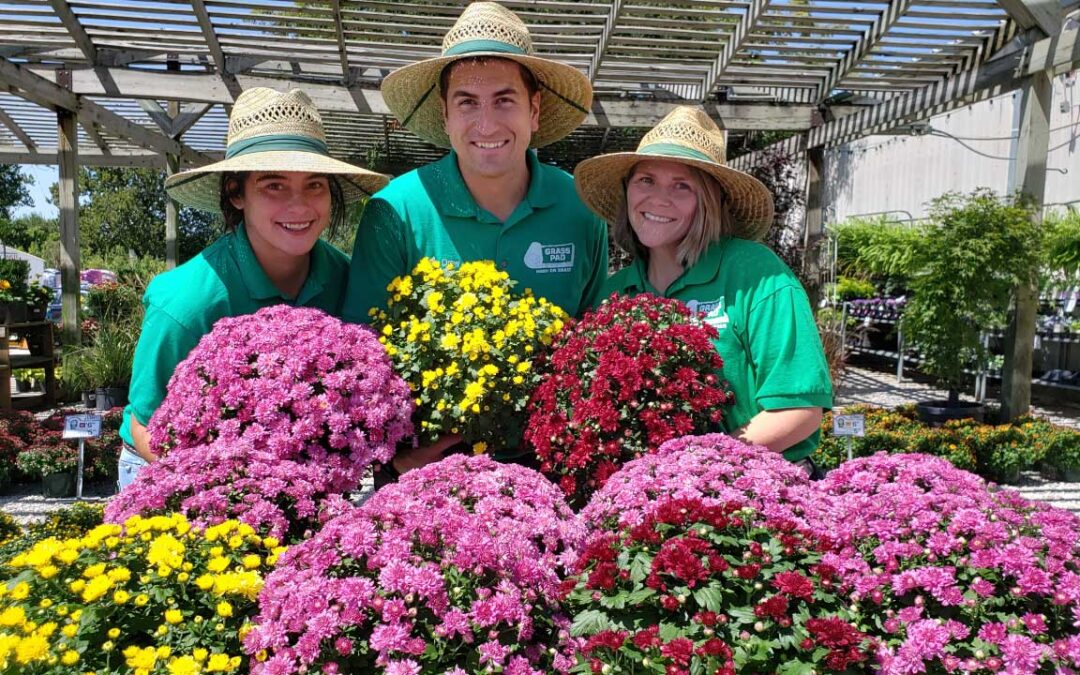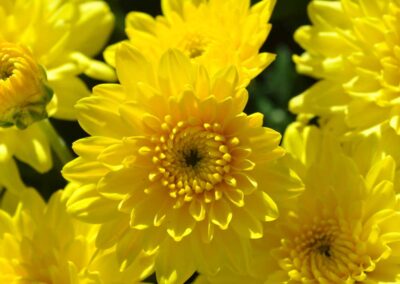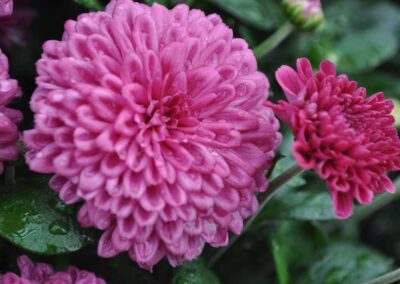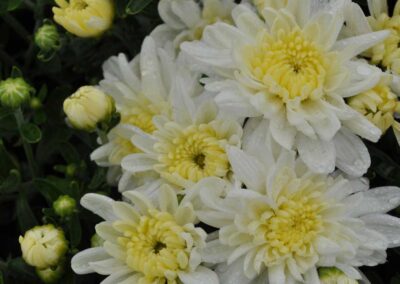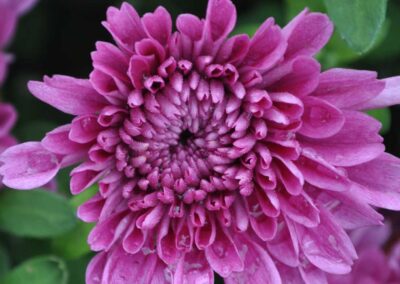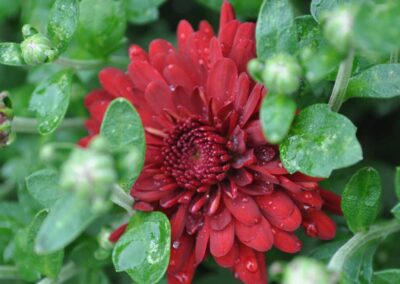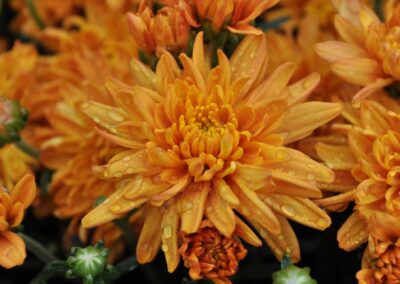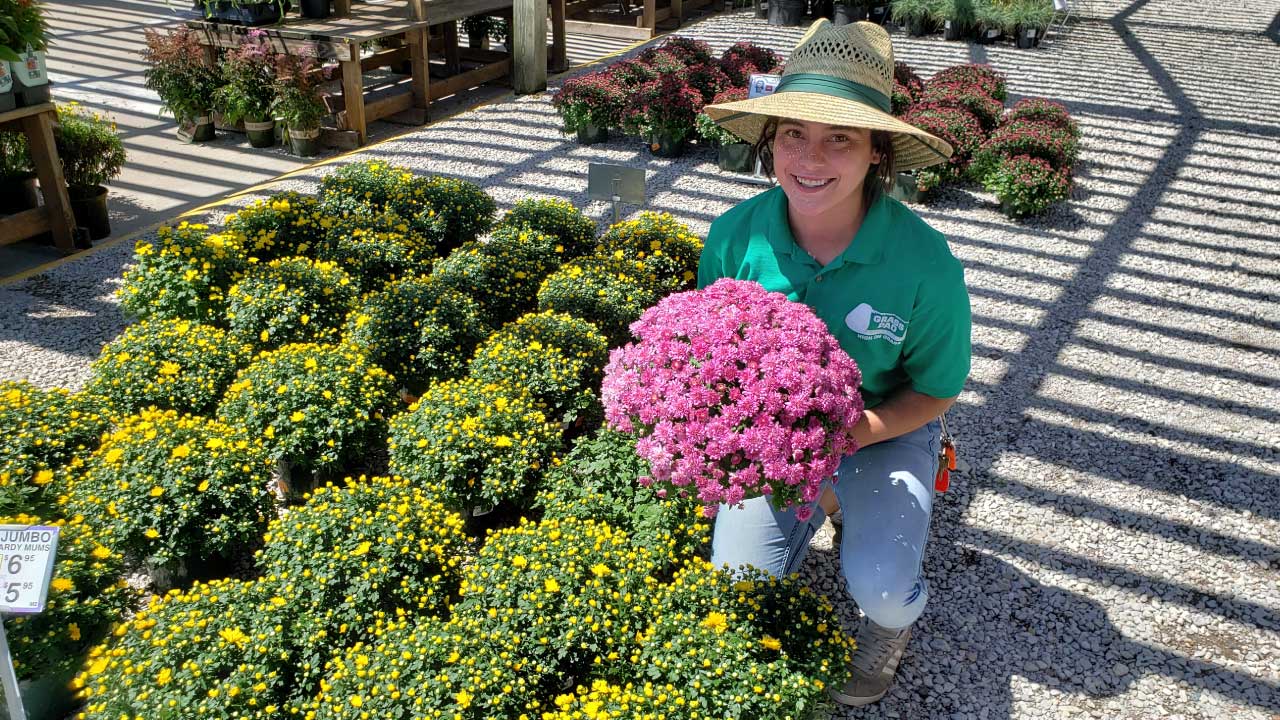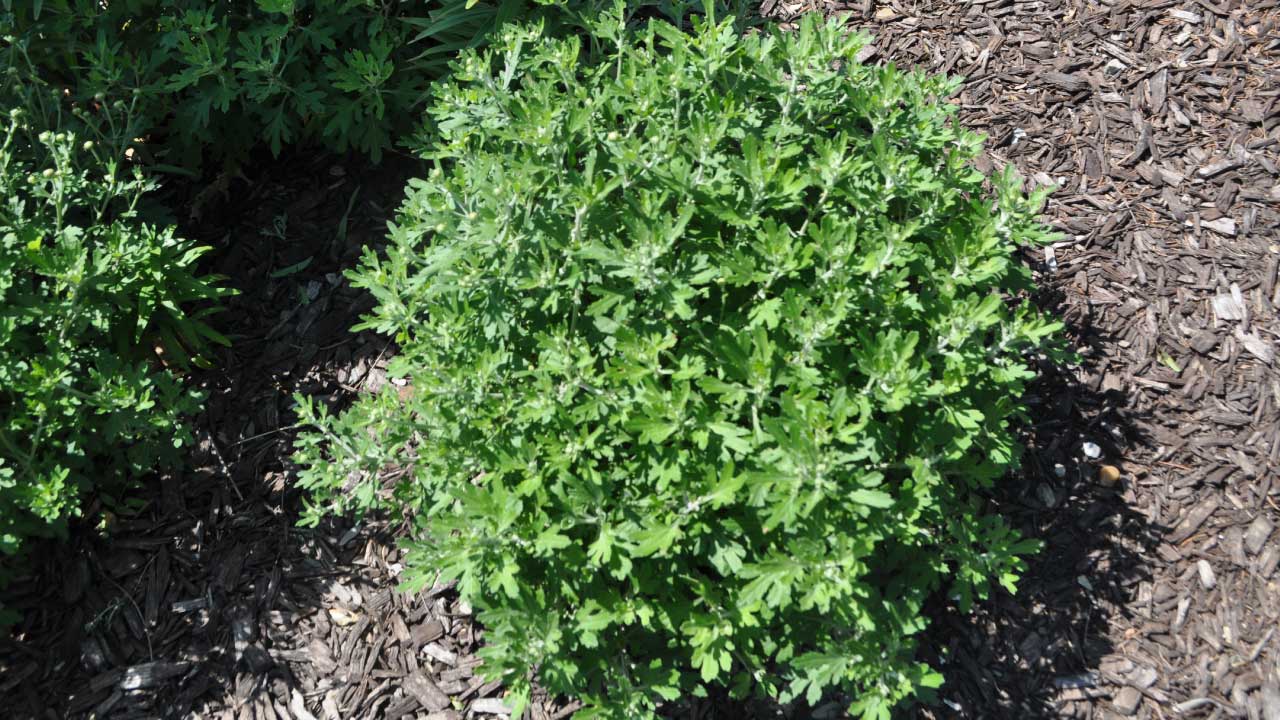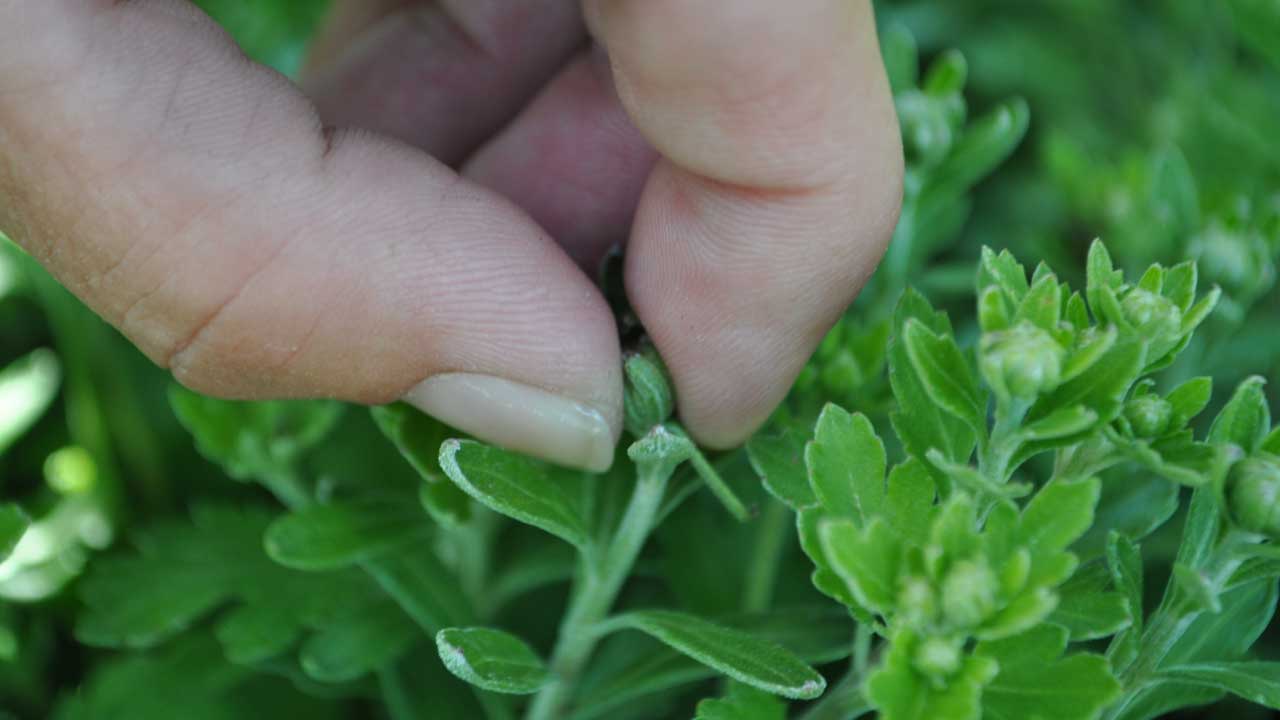Hardy garden mums are iconic during the fall harvest season. Hundreds of cultivars of mums provide an array of colors and bloom shapes in the fall garden. Bloom colors will range from white, yellow, orange, bronze, red, pink, purple, and burgundy. In addition, garden mums come in many different flower shapes. Decoratives, Cushions, Daisies, Pompons, and Button style chrysanthemums are the most traditional.
What is a Hardy Garden Mum?
Hardy Chrysanthemums, also called garden mums, are popular plants that have been used in the gardens of China since before 550 B.C. Their blossoms brighten containers, landscape beds, and borders from mid-August through November with blooms that often last for many weeks. Today, hardy mums are a large part of the fall harvest season, along with asters, pumpkins, gourds, and straw bales. Garden mums are a great way to revive worn-out planters and bring color to any spot in the landscape.
Choosing a Garden Mum
When choosing garden mums, look for full, healthy plants that still have some tightly closed buds. This ensures you’ll get blooms for a more extended period. Additionally, mums do best and often look better when repotted out of their plastic nursery pot and into larger containers and landscapes.
Idiot-Proof Guide to Planting Garden Mums
- Choose a well-drained location where the mums will receive at least five hours of sun per day.
- Dig a hole twice as wide and only as deep as the container. Space blooming garden mums in the fall based on plant size.
- Remove from the container and place the mum into the hole onto undisturbed soil. The top of the root mass should be level with the soil grade. Mums growing in fiber pots can be planted without removing them from their containers.
- Backfill with a balanced mixture of Grass Pad’s Max Mix planting mix and native soil. Pack the soil mixture firmly around the root mass.
- Cover the planting area and the top of the root mass with the mulch of your choice.
- Water thoroughly at planting using a diluted solution of Uncle’s Root Accelerator.
- Water as needed; never let newly planted mums in bloom or buds dry out. The amount and frequency will vary by size, weather, and soil conditions.
- Fertilize with Uncle’s Root Accelerator every two weeks until buds crack open. Repeat monthly in the growing seasons.
Uncle’s tip: Avoid watering over the top of mum plants. A mum’s branches are brittle and easily broken. Large containers of mums contain multiple plants and should be watered from the side into the pot to prevent the individual plants from splitting apart.
Can Garden Mums Survive Winter?
Most folks treat them as annuals; however, garden mums are hardy from zones 5 to 9 and should be considered tender or half-hardy in cold zones. With the proper care, they can come back in most parts of Kansas and Missouri but may struggle to survive winters in Nebraska.
How to Keep Mums Coming Back
The best chance for fall planting success is to plant garden mums as early as possible and pick the tightly budded mums. If you plant them early in the fall and fertilize them routinely with Uncle’s Root Accelerator, they will have enough time to root before the ground freezes and survive the winter. However, Mother Nature and Old Man Winter can take their toll on the hardiest of plants, so there are never any guarantees that mums will survive the winter, but here are some tips to help you beat the odds.
Mum Care After Blooming
Cut your mums down to the ground after the blooms fade and the foliage dies back. This is typically in mid-December. Apply a 3-4 inch layer of mulch or Uncle’s Max Mix to protect the roots during the winter and prevent them from heaving from the soil during winter’s freeze and thaw cycle.
Uncle’s Tip: To assist in finding them in spring, mark the location of each individual plant with a Grass Pad marking flag.
Mum Care In The Spring
In late March, remove the mulch from the base of each plant to allow the sun to warm the soil and trigger new growth. Fertilize with Uncle’s Root Accelerator and continue to fertilize every four weeks through September. Mums that survive could be thin and unshaped. They will need to be pinched back regularly to keep them compact.
Pinching or Pruning Buds
Pinching back your garden mums the following spring season is critical to encourage branching and developing a compact plant habit. When new growth is four to six inches tall, use your thumbnail and index finger to remove or pinch off about ½ of the new growth. Do this at the top of every shoot. Repeat this procedure through the summer whenever new shoots are four to six inches long. Stop pinching around the Fourth of July.
How to Divide Mums and Make New Plants
Chrysanthemums sometimes become crowded in the garden. The old center portion of the plant dies back, and new growth occurs around the perimeter of the clump. Renovating chrysanthemum clumps every three or four years will encourage healthy growth, neat plant habit, and continued flowering.
When new shoots appear in the spring, dig the entire clump. Use a sharp spade or knife to cut the clump into wedge-shaped, pie-like sections. Remove and discard the point of the wedge (this is the oldest part of the clump). Plant the new plant (wedges) eighteen to twenty-four inches apart at the depth they were growing. Amending the soil the Uncle’s Max Mix and watering in with a diluted solution of Uncle’s Root Accelerator.
More Related Articles to Garden Mums
Uncle's Root Accelerator - Keeping Plants Healthy
- Uncle's Root Accelerator gives plants a healthy start. Learn More at this Link
Uncle's Max Mix - The Secret is in the Soil
- Uncle's Max Mix is a premium-grade horticultural planting mix. Learn More at this Link
Grass Pad's Seasonal Flower Markets
- Available in season, Grass Pad has a large selection of annual and perennial flowers. Learn More at this Link
Flower Pots Available at Grass Pad
- We inventory many different sizes and quality of glazed and decorative pots from around the world. Learn More at this Link
Snowflake Pansies for early Spring and Fall
- Have fun with pansies and use them everywhere. Learn More at this Link

